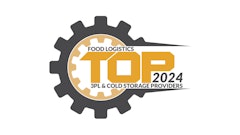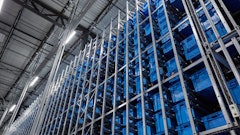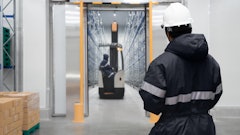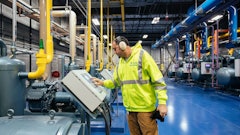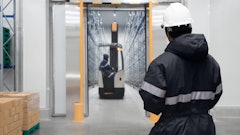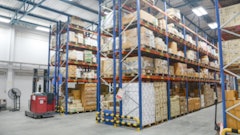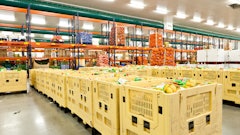Starting in the early 1990s, consumer goods companies have been in the hunt to cut logistics costs.
The typical efforts by both large and small manufacturers have been to use less costly pallets and packaging, to switch to lower-cost carriers, and the like.
Today, the focus on reducing costs is still alive. But there are changes.
"It's more critical now," says Ralph Drayer, president of Supply Chain In'sights, a Cincinnati-based consultancy.
"And I think the biggest change that's happened in logistics is going from a cost center mentality to looking at logistics as a key driver of business success. What can we do with the supply chain, with logistics, to drive better value to the end customer and consumer? So, cutting costs has become a strategic differentiator for leading companies. It's a source of business growth as opposed to just efficiency. That is a huge shift."
Beginning in the early to mid-1990s, companies began to recognize this opportunity and act on it. They attacked the drivers of costs with initiatives that focused on touches (cross docking), speed (a dedicated fleet) and visibility (collaborative planning, forecasting and replenishment).
At Procter & Gamble Co., the key initiative was continuous replenishment. The consumer products giant started with "a very selfish objective of reducing our logistics and supply chain costs," recalls Drayer of his former employer.
"What we found was that by installing this logistics vehicle, not only did we achieve the inventory savings, the transportation savings, the better load cube, but we created a platform''a collaborative platform''that has really served as a foundation for other collaborative initiatives that have grown our top line," he says.
Food Logistics has assembled the following portfolio of examples of companies that are cutting their logistics costs effectively.
Newell Rubbermaid Transforms Logistics Operations
Newell Rubbermaid Inc. is a world-class maker of consumer goods with a brand portfolio that includes Paper Mate, Rubbermaid, Levolor, Sharpie and Graco. The Atlanta-based company spends $1 billion on logistics across nearly 30 different divisions.
A few years ago, the divisions were managing transportation as an offshoot of order management or warehouse management systems. This was resulting in heavy manual processes and limited functionality. Only one division had an actual transportation management system, but it was unable to deal with the complicated planning needed to drive high productivity.
Newell Rubbermaid aimed to transform its transportation and logistics operations. It set an aggressive goal of achieving 5 percent year-over-year cost reduction and productivity improvement. Specifically, the company sought to eliminate legacy systems and manual-driven tasks and to reduce IT costs. It also wanted instant access to centralized information and increased collaboration among suppliers, service providers and customers.
In addition, Newell Rubbermaid wanted proactive monitoring and alert notification about product movements and real-time planning, execution and event management with the ability to divert and expedite shipments in the best way possible.
To gain these benefits, the company deployed new software to manage and optimize shipments across all global business units regardless of geography or transportation mode. The application, the GC3 from Global Logistics Technology Inc. (G-Log), Shelton, CT, combines supply chain visibility and execution functionality in a single integrated Web-native architecture. It enables the company's many business units to autonomously manage all aspects of the logistics lifecycle from shipment order to freight settlement.
"As our business expanded both from a sourcing and finished goods shipment perspective, it was critical that we implemented a flexible, scalable global application that could support our burgeoning worldwide business," says Mark Michener, global manager, transportation systems. "A Web-native architecture was imperative."
To date, the company has seven of its 10 primary shipping sites in the United States operating with the software. "We built our value prop around transportation cost savings with a target of 5 percent," says Michener. "We have been able to achieve that 5 percent and get our return on investment."
One of the benefits of the new system, he adds, is the ability to track core carrier compliance and negotiate better rates. This led to additional savings and improved on-time deliveries, while nearly eliminating expediting scenarios.
Since deploying the application, it has switched focus from outbound planning to inbound planning. This has already paid dividends. For example, a year ago Newell Rubbermaid was importing 5 percent to 10 percent of its material. By the end of 2005, more than half of its manufacturing will operate in low-cost countries including China, Mexico and India.
Ocean Spray Turns To Inbound Management
Ocean Spray markets the leading brand of canned and bottled juice drinks, but it was lagging in visibility of its inbound orders and shipments.
In fact, the Lakeville-Middleboro, MA-based company's situation was full of inefficiencies. There was no existing management system in place, so there was limited order status visibility and no order history database. Ocean Spray had manual order execution and could not measure carrier compliance.
So, the company's logistics executives decided to deploy technology in its inbound operations and connect suppliers and carriers. To make the move easier, Ocean Spray subscribed to a Web-based transportation management solution called the Nistevo Network, developed by the Nistevo Corp., Minneapolis. By doing so, the company saved time and avoided adding costs for in-house infrastructure.
The goal was to optimize the inbound transportation function at Ocean Spray, according to Doug Ward, inbound transportation manager. "Specifically, the control, planning, execution and settlement of inbound packaging and raw materials," he says.
First, the company connected the various parties to the raw materials delivery system. Then, Ocean Spray could receive the status of in-transit shipments and be notified if any shipments did not meet the delivery schedule. It could also use the dock management scheduling to track equipment and schedules centrally.
Once on the network, Ocean Spray changed its carrier contracts from paper to electronic. This yielded many benefits. For example, it simplified the management, updating and tracking of lanes, insurance, freight costs, and identified the best carriers to use. Ocean Spray and the carriers each have access to one contract through the network. Rates and contract updates can be adopted online after the parties work out the details.
The network also provides discipline to order management and lead time compliance and promotes collaboration between shipping/receiver and carrier. It also automates the tendering of inbound shipments, taking into account contract commitments, costs and carrier ratings.
There are more benefits to be realized in the future, according to Ward. "A continued control and reduction in unplanned events that translate into savings, auto pay feature allowing a paperless environment, and dock door management," he says.
Pinnacle Foods Upgrades Transportation Management
Pinnacle Foods Corp. markets grocery products that are familiar household brands: Swanson, Vlasic, Mrs. Butterworth's, Log Cabin, Duncan Hines and Mrs. Paul's. The company was outsourcing much of its transportation operation to a network of third-party logistics providers.
The Cherry Hill, NJ-based company handles tens of thousands of shipments per year from manufacturing locations to distribution centers. The volume and revenues essentially doubled in March 2004 after merging with Aurora Foods following the latter's Chapter 11 reorganization.
With the merger, Pinnacle wanted an overall change in its logistics operation. It sought to reduce overall logistics costs for the refrigerated lines largely by bringing outsourced functions in house. The company also wanted to build a transportation infrastructure quickly and cost effectively.
To reach these goals, the company implemented a centralized transportation system using On-Demand TMS from LeanLogistics Inc., Holland, MI. The solution is designed to optimize daily transportation, manage daily changes to orders and shipments, and handle communication with carriers.
The solution provides complete planning, execution and settlement, enabling users to centralize transportation command and control, according to officials at Pinnacle. It scales to incrementally add shipping volume, even doubling shipping volumes, such as with the acquisition of Aurora Foods.
The application enables Pinnacle to take over the management of the transportation function from the third-party logistics provider, while decreasing costs by employing a more efficient process. "There were savings in bringing the management of transportation back in house, as well as being in touch with what is being done on a daily and weekly basis," says Brian Smolenyak, director of transportation.
Pinnacle is now able to use the software's "continuous move" planning functionality. This process was not possible with the former decentralized third-party systems. At this point, Pinnacle is still in the process of developing an internal initiative to manage continuous moves within their network. "They are currently doing a little, but the control of the capacity is a greater value than reducing freight charges," says Smolenyak.
The application is providing greater visibility of shipments for Pinnacle and its customers. The company also plans to implement WebSettle to eliminate the third-party freight payment service. "Using this platform allows my team more flexibility in managing our transportation, while having greater real-time access to information. We see real value in that," says Smolenyak.
Reliable Foods Gains Insights Into Delivery Operations
Reliable Food Supplies has been providing quality frozen and refrigerated products to foodservice customers for more than a half century. Its fleet of trucks loads more than 4,500 food items at the central warehouse and provides customers with fresh dairy products, meat and frozen vegetables.
Tony Priaulx, IT manager, wanted to improve the overall productivity and efficiency of services by gaining more insight into the delivery cycles.
"Any exceptions, changes or problems in the daily delivery schedule were not reported until the following day," he says. "As a result, the majority of issues that came up remained unresolved."
The Canadian company needed a way to gain real-time insight into its delivery cycle. Delays in information delivery mean that Reliable Foods could not effectively monitor and stay on top of exceptions and the daily delivery activities key to its business. One area of special concern was monitoring driver productivity.
"From the moment our drivers arrived for work until they went home, we had no real way to measure unproductive time," says Priaulx. "It's hard to find sources of cost leakage without real-time data. We wanted to be able to measure their performance against an engineered plan."
Reliable's 10-year-old logistics application was less than reliable and too expensive to maintain. The reports were too difficult to run and complicated to interpret. Moreover, the cartridge-based computer processors mounted in some of the refrigerated trucks didn't provide the information needed to identify delivery problems quickly enough.
To find a solution, Reliable turned to Toronto-based Cube Route's on-demand logistics services. The subscription-based visibility service provided dispatchers with real-time visibility into the delivery status of the company's fleet. The service tracks vehicles using wireless-to-Web devices such as cell phones, GPS-enabled cell phones, handheld PDAs or field-tracking units.
The Cube Route Visibility service captures the following real-time data: mileage, delivery productivity, timecard information, exceptions, temperature, and signature capture. This enables dispatchers to monitor pickup orders scheduled into each driver's daily delivery route, as well as doing away with the need to re-engineer existing processes, driving up costs.
"The service has provided us with an affordable and effective way to stay on top of our delivery operations," says Priaulx. "Our dispatchers simply log in to the Web-based service at any time of the day to see the status of all deliveries in real-time."
Since its initial rollout in September 2004, Reliable has realized savings and improvements in several areas, including driver productivity and customer service. For example, the company can more accurately track driver time and activities from arrival in the morning to the end of their shift. This has led to ways to improve productivity. Also, making adjustments in real-time has lightened the load of the customer service department.
The new customer service capabilities include single-call customer service resolution, faster response times through real-time delivery visibility and exceptions management, two-way communications with drivers and Web browsing capabilities.
Reliable reports that the service is delivering benefits and meeting ROI estimates. "We have gained real-time visibility into our delivery cycle without any capital cost expenditure," says Priaulx. "With'in a matter of weeks, we were improving bottom line results."
Coca-Cola Bottling Co. Consolidated
Reducing Inventory: The Real Thing
Coca-Cola Bottling Co. Consolidated (CCBCC) is the second largest Coca-Cola bottler in the United States, with selling regions in 11 states and a consumer base of more than 18 million people.
Despite its size, the Charlotte, NC-based company had to address the classic problem facing the soft drink business: namely, volatility in demand.
Due to frequent promotions, changes in seasons and changes in price, it was challenging to maintain efficiency and reduce inventory. Such conditions made it difficult to grow the business and continue to provide first-rate customer service.
CCBCC decided to develop a strategy to optimize corporate-level forecasts to create collaborative consensus forecasts that extend to the SKU level. The forecasts would be shared each week with teams from field sales and trade marketing.
To carry out this strategy, the bottler selected a collaborative demand management solution from Manugistics Inc., Rockville, MD. The Web-based application enables CCBCC to streamline and centralize its forecasting across its enterprise.
The solution takes into account sales history, new product introductions, price plans, promotions, local events, feedback from sales managers on forecasts and adjustments.
Previously, the company could consider only 12 weeks of sales history, and had a forecast horizon of just four weeks. The solution increased the sales history to 104 weeks and the forecast horizon to 17 weeks. There is now daily''as opposed to weekly''replenishment, load building and SKU inventory counts.
According to Manugistics, the bottler is better able to model promotional lift. This leads to having the right amount of inventory on hand to meet demand that fluctuates because of promotions.
The results have been dramatic due to real-time visibility and a forecast accuracy of nearly 90 percent. The bottler improved its supply planning and reduced inventory by 25 percent to 50 percent. A production schedule that was fixed for a week to 10 days is now only three days.
For CCBCC, a collaborative demand solution is the real thing.







